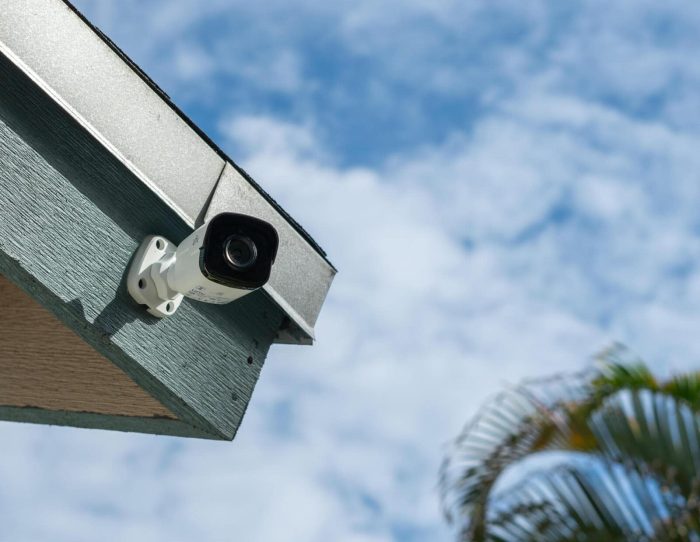Embark on a journey into the world of repairing siding, where we unravel the importance of upkeep, common damages, and the tools needed for a successful repair.
Delve into the different types of damage, techniques for repair, and maintenance tips to extend the lifespan of your siding.
Introduction to Repairing Siding
Maintaining and repairing siding on a property is essential to ensure the structural integrity and appearance of the building. Siding acts as a protective barrier against the elements, helping to keep out moisture, pests, and debris.
Common Reasons for Siding Repairs
- Weather Damage: Exposure to harsh weather conditions such as strong winds, heavy rain, or extreme temperatures can cause siding to deteriorate over time.
- Impact Damage: Accidental impacts from objects like tree branches, rocks, or even sports equipment can cause dents, cracks, or holes in the siding.
- Aging: As siding gets older, it may start to warp, fade, or become brittle, requiring repairs or replacement.
Potential Consequences of Neglecting Siding Repairs
- Water Damage: Cracks or gaps in the siding can allow water to seep into the walls, leading to mold growth, rot, and structural damage.
- Pest Infestations: Holes or gaps in the siding can provide entry points for insects, rodents, and other pests looking for shelter.
- Curb Appeal: Neglected siding can detract from the overall appearance of the property, affecting its value and curb appeal.
Types of Siding Damage
Cracks, warping, and rot are common types of damage that can occur to siding. These issues can be caused by various factors such as weather conditions, age, and lack of maintenance.
Weather Impact
Weather conditions play a significant role in the deterioration of siding. Exposure to extreme temperatures, moisture, UV rays, and strong winds can cause siding to crack, warp, or rot over time. For example, prolonged exposure to moisture can lead to mold growth and rot, while intense sunlight can cause fading and warping of the siding material.
Age Contribution
As siding ages, it becomes more vulnerable to damage. Over time, the materials may weaken, lose their protective coatings, and become more susceptible to cracks, warping, and rot. Regular maintenance and inspections are essential to prolong the lifespan of siding and prevent further deterioration.
Tools and Materials Needed
When it comes to repairing siding, having the right tools and materials is essential to ensure the job is done correctly and efficiently. Additionally, it is important to prioritize safety by wearing appropriate gear to prevent any accidents or injuries.
Essential Tools for Siding Repair
- Siding Removal Tool
- Hammer
- Tape Measure
- Caulk Gun
- Utility Knife
- Ladder
- Nail Gun
Commonly Used Materials
- Replacement Siding Panels
- Trim Pieces
- Caulk
- Nails
- Screws
- Paint
- Primer
Importance of Safety Gear
Wearing safety gear such as gloves, goggles, and a dust mask is crucial when working on siding repairs. These items provide protection from sharp edges, debris, and harmful fumes that may be released during the repair process. Prioritizing safety ensures a safe working environment for yourself and others involved in the project.
Repair Techniques
When it comes to repairing various types of siding damage, there are different techniques that can be used depending on the extent of the damage. From simple repairs to replacing entire panels, each technique plays a crucial role in ensuring the durability and aesthetics of your home's exterior
.
Replacing Damaged Siding Panels
- Start by carefully removing the damaged siding panel using a pry bar or hammer.
- Measure the dimensions of the panel to be replaced and cut a new piece of siding to fit.
- Slide the new panel into place, ensuring it aligns properly with the surrounding panels.
- Nail the new panel securely into position, making sure it is flush with the rest of the siding.
- Finally, caulk around the edges of the new panel to seal any gaps and prevent moisture from seeping in.
Sealing Cracks and Preventing Water Damage
- Inspect the siding for any cracks or gaps where water can penetrate.
- Use a high-quality exterior caulk to fill in any cracks or gaps, ensuring a tight seal.
- Apply a fresh coat of paint over the caulked areas to further protect the siding from water damage.
- Regularly inspect and maintain the caulked areas to ensure they remain sealed and watertight.
Maintenance Tips for Extending Siding Lifespan
Regular maintenance is key to prolonging the lifespan of your siding and preventing costly repairs down the line. By following these simple tips, you can ensure that your siding remains in top condition for years to come.
Inspect and Repair Damage Promptly
- Regularly inspect your siding for any signs of damage, such as cracks, holes, or warping.
- Address any issues immediately to prevent them from worsening and causing more extensive damage.
- Replace any damaged sections of siding to maintain the integrity of your home's exterior.
Clean Your Siding Regularly
- Remove dirt, mold, and mildew by washing your siding with a mild detergent and water solution.
- Consider using a pressure washer for tougher stains, but be careful not to damage the siding with too much pressure.
- Clean your siding at least once a year to prevent buildup and maintain its appearance.
Protect Your Siding from the Elements
- Trim trees and bushes near your home to prevent branches from scratching or damaging the siding.
- Ensure that your gutters are clean and functioning properly to prevent water damage to the siding.
- Consider applying a protective sealant or paint to your siding to provide an extra layer of defense against the elements.
Final Thoughts
In conclusion, maintaining and repairing siding is crucial for the longevity of your property. By utilizing the tips and techniques discussed, you can ensure your siding remains in top condition for years to come.
FAQ Overview
What are the common reasons for siding repairs?
Siding repairs are often needed due to weather damage, age-related deterioration, or improper installation.
What tools are essential for repairing siding?
Essential tools include a hammer, nails, pry bar, circular saw, and a level for accurate repairs.
How can I prevent water damage to my siding?
Properly sealing cracks and ensuring good drainage around your property can help prevent water damage to your siding.




